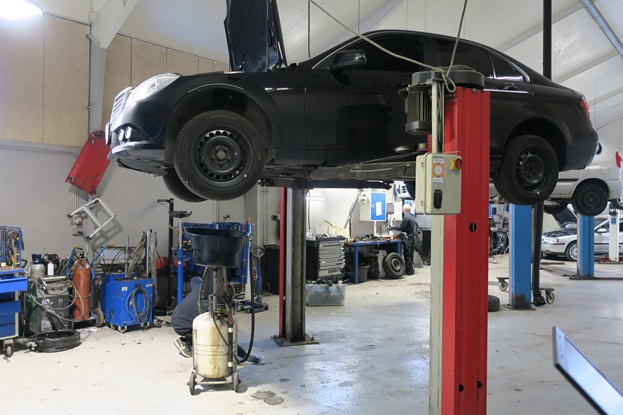Psychologists help mechanics perform better car repair service
Car repair shops are increasingly using digital tools in their work processes. User tests conducted by our psychologists provides unique insights for the developers so they can optimise the software tools and make them more user-friendly.
Cruise control, rear view camera, parking sensors, and automatic tyre pressure monitoring have become standard equipment in new cars. As the cars become filled with still more advanced technology, production and work processes in garages and repair shops also have had to change. Previously, spanner was one of the most important tools for mechanics, but these days they rely more on computers and digital tools.
Information that can be used for further development
But how does one help mechanics to carry out better and faster repairs and servicing on vehicles while also reassuring car owners that they are being carried out according to the car manufacturer’s requirements?
Hella Gutmann Solutions A/S, who develops digital tools and equipment for garages and auto repair shops, wanted to work on this challenge, together with a number of auto repair shops. The company therefore asked FORCE Technology’s Human Factors specialists if they could carry out user testing of Hella Gutmann’s products to get user feedback on their digital tools as well as to find out how they could be made even more user friendly.
The eye’s movements reveal the user’s experience
Over the course of the study the psychologists studied the behaviour, workload, stress and attentiveness of the mechanics while using the digital tools. They also investigated where and when in the work process the mechanics sought out assistance from the digital tools, and to what extent the tools gave them the help they required.
During the gathering of data, the mechanics were equipped with eye tracking and GSR equipment, so that the psychologists could keep track of what the users were looking at, for how long and in what order. This equipment has the advantage of being able to provide objective and quantifiable information about what the users actually do, rather than just what they believe or think they do.


Usable results presenting actual solutions
In general, the users appeared to be pleased with the digital tools and found them useful in their daily working tasks. One thing they felt functioned especially well were the illustrations provided with the service check lists.
There were other things that they felt could be adjusted or optimised in order to further improve the digital tools. For example, text-heavy screen displays, where it could be helpful to break down information with headings, so that the user finds it easier to read and spot what they are looking for.
One important result that emerged from the psychologists’ analysis related to the positioning of data on the screen and the order in which it is shown. The results clearly showed that it would help the mechanics considerably in their working process if information was available when they needed it. The proposed solution was to move key information from one screen display to another and in some instances, switch the order of the screen displays so they followed the work processes of the mechanics more naturally.
The positioning and presentation of important information on the screen was also put to the test: do the users see vital information; do they understand what it means, and what they need to do consequently? A number of measures were proposed here which could optimise the system, such as highlighting certain sections of text and adjusting the amounts of text in order to ensure important information was not missed.
Interplay with other systems
In addition to testing Helle Gutmann’s software solution, it was also studied how the digital tools interact with other software systems which the mechanics use, for example for invoicing and ordering spare parts.
The study showed that although the software developers have integrated the system with other related systems, the user is not always aware of this and may not know how to switch over to the other system. One suggestion was to highlight the buttons for integration with other IT systems so that the user notices them. This would save time for the user and ensure that important information is not lost when changing from one system to another. Optimal integration of systems is essential for the auto repair shops, for example in order to ensure the correct spare parts are ordered in accordance with car manufacturers’ requirements.
Several positive angles
The project provided Hella Gutmann’s developers with the opportunity to put themselves in the position of the users so that they might better understand their daily working processes. For example, how long the mechanics spend on the individual digital tool in the course of one servicing procedure, and how the tools are used. This information is important for Hella Gutmann in the design and further development of its software, in order to increase user-friendliness.
“The results from the project have given Hella Gutmann important information about the user experience, as well as what can be adjusted in the software system. FORCE Technology’s specialists have confirmed some of our assumptions as well as brought new information to the table, which we definitely will be using going forward,” says Ole Hedegaard Petersen, Products & Production Manager at Hella Gutmann Solutions.
The project has had a positive impact on several levels. Firstly, it has helped Hella Gutmann to create a new, innovative product, and secondly the users were extremely happy to be involved in the project and to be asked for advice on their usage and needs.
FORCE Technology has also been able to test out new techniques and test methods, which companies from other industries can benefit from in the future. The methods are ideal for identifying how people interact with software programs and digital tools, irrespective of which industry they are in.
